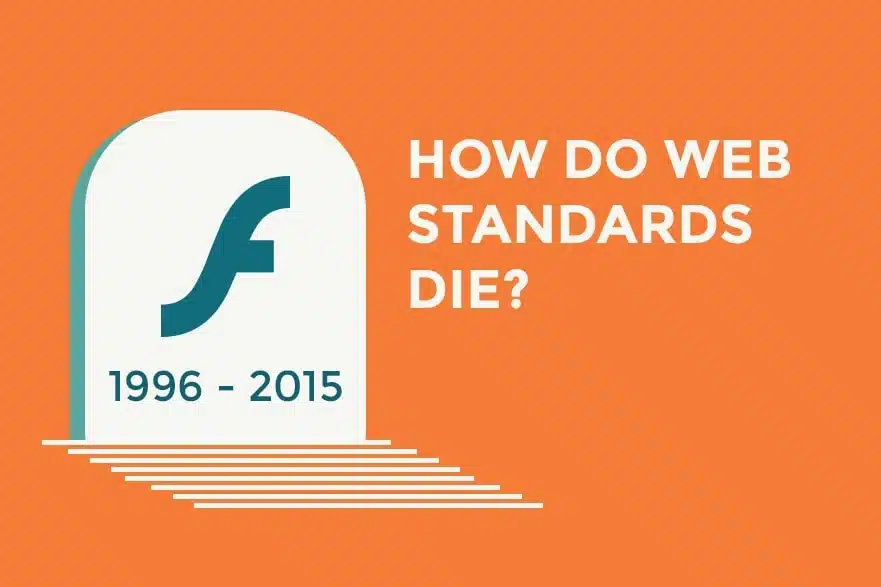

Do you remember Geocities? The flashing “Internet Explorer” logos, marquee scrolling text, and the <blink> tag – how we loved the <blink> tag. It was good while it lasted, and it was really important! Geocities and other services like it – Angelfire, Tripod and more – got an entire generation of tech users onto the internet with much less friction than before.
But then their time was over. A shame. They were so much fun! How did that even happen?
Basically, the internet grew up a bit.
Lots of things happened, actually. Old style website builder services came at a time when the graphical web was still new and interesting, and when loads of enthusiasts were just coming into their own.
As more people began to use the web, some web standards and tools simply couldn’t keep up. Website builders in particular fell prey to the growth of Content Management Systems, such as WordPress (2004), Joomla! (2005) and Drupal (2001), which were fulfilling much the same roles – but could scale far better for the small user, and even drew some attention from bigger businesses.
The growth of CMS products in the middle years of the last decade saw many explosions and extinctions, and we’re left now with the solid, extensible giants we now have. And as the web grew, and these tools with them, we began to see way too many options – and develop even more varied solutions.
It’s not just web apps and services, specific web standards also suffer or flourish under competition.
We’re seeing this happen, right now, this very month, with Adobe’s long running winner – Flash.
In its time, Flash was amazing. Between interacting readily with a page, displaying complex multimedia, and acting as a container for a huge load of tools, Flash did many jobs other systems either didn’t like to do well, or handled in unreliable ways.
However, it’s had issues. There are huge, and recurring security problems. It’s not the most user-friendly product any more, being so complex, and it’s got a reputation for being the thing that does nothing but show you loud and obnoxious ads.
For the past five years, HTML itself (the scaffold on which the internet is built) has been catching up to Flash in meaningful ways. The standard for HTML5 video has looked cleaner for those of us building websites since 2009 at least – which made it a winner over Flash for video content.
When multiple standards compete, eventually one will become a clear winner – either by just being better, or being more widely accepted by users.
So Flash as a web standard being killed, and it’s death by a thousand cuts.
What did the old behemoth in, anyway? As with Geocities, a lot of small issues, fueled in part by the platform’s inherent problems and weaknesses, just made Flash a bad investment for developers and businesses.
- Apple didn’t adopt Flash with its mobile devices, as early as 2007 with the release of the iPod Touch and the original iphone. Steve Jobs penned a “Thoughts on Flash” rant in 2010 that summed up the issues nicely.
- Video standards changed – between HTML5’s <video> element, and the H.264 codec becoming more widely used, Flash for video on the web stopped being the only best option.
- Early this year, YouTube switched from Flash to HTML5 video as a default for its service.
- Now, AdWords is actively encouraging advertisers to switch to HTML5 video. And a post this week from a notable developer within Google suggests Chrome will “defer playback of autoplay media until [a tab in the background] is foregrounded”.
- Google decided months ago that it would automatically pause content that’s not core to the value of a page – usually Flash ads – in its Chrome browser. That auto-pausing of Flash content begins today.
The prognosis is not looking good for Flash. It’s been one-upped by a new standard (HTML5 video) for its most commonly used feature. It’s being deprecated intentionally by a leading browser. And it’s still not fixing the security or public perception problems.
What’s the core lesson for website owners?
Really, for Flash, it’s only a matter of time before it becomes our next Geocities. And, as we’ve seen with other outdated technologies, it’s mostly because of a lack of user value compared to what have become its successors.
In the case of many websites still using old technologies – either to include video or as a core part of their structure, now would be the time to make a change.
For businesses, web standards have one job: enabling communication. There’s no bad news in using one standard or the other, if it gets you in front of your customers – but it’s also important to know when and how to move on.
Knowing things like;
- Which standards your web properties are using,
- The pros and cons of those standards,
- Competing standards that may be gaining adoption steam over the one you’re using,
- User adoption levels for these competing standards
… will go a long way toward helping you identify when it’s time to give up the ghost of a given tool, no matter how beloved or familiar it may be.
Performance Matters.
Do you know how well your website is performing? We can help you find new opportunities to get more business value from your online properties.
Click the button below to find out more about our limited time Website Audit offer.
Source: Hello BLOG
Recent Articles
Write For Us
Think you’ve got a fresh perspective that will challenge our readers to become better marketers? We’re always looking for authors who can deliver quality articles and blog posts. Hundreds of your peers will read your work, and you will level up in the process.Ready to grow? Say Hello










